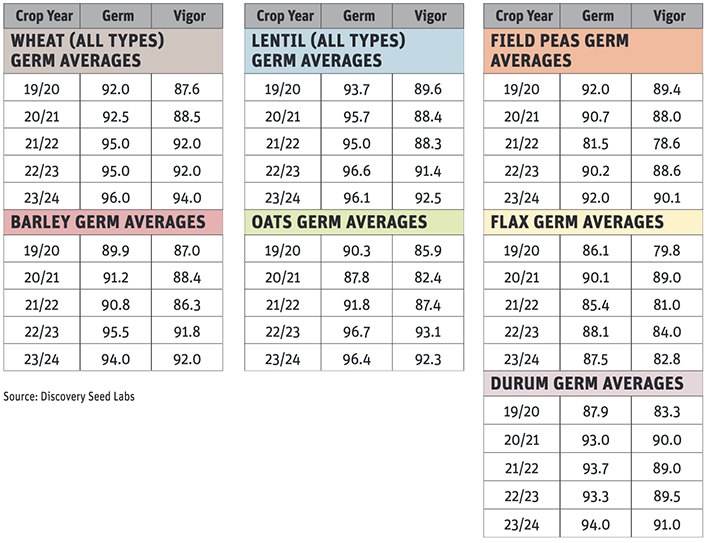SASKATOON — The seed supply in Saskatchewan is in good shape.
Sandy Junek of Saskatoon-based Discovery Seed Labs said weather patterns in the previous growing year largely dictates the quality of seed available to farmers.
“Dry conditions tend to produce decent quality seed, maybe not the yields that people are looking for, but the quality of the seed that comes off is pretty good. It typically will have low levels of disease, strong germination and strong vigour,” Junek said.
Junek talked about average disease levels of the seed samples that have gone through Discovery Seed Labs since last fall during a presentation at the Saskatchewan Seed Growers’ Association’s annual general meeting in Saskatoon Jan. 11.
“There were a few areas of the province that had moisture, or even a bit of excess moisture, throughout the whole growing season. So, in those areas, we do have samples that have higher disease rates than we’ve seen for the past couple of years, but they’re still for the most part at a manageable level,” Junek said.
He also presented the average germination and vigour levels, which he said are good to very good across Saskatchewan.
For all types of wheat the average germination is 96 percent, durum is 94 percent, barley is 94 percent, oats is 96.4 percent, field peas is 92 percent, lentils is 96.1 percent and flax is 87.5 percent.
Junek said there should be a good seed supply going into spring.
“The only concern that is being brought up is with barley varieties. There was quite a bit of crop out that did get that late season moisture. So, there is concern that those germs might look good now, but they might drop off over the wintertime,” Junek said.

“I wouldn’t say that we’d necessarily be looking at a seed shortage, but that’s something producers were asking us quite a bit about at the show.”
The dryness last year increased the probability pulses will incur mechanical damage when being handled, and there is an elevated amount of cracks and splits showing up in the germination tests this year.
“It’s not as bad as it was last year, but it’s still there,” Junek said.
“I always encourage people after they get their sampling done to get it retested for germination in the spring because sometimes it can drop off and this can be quite significant.”


















